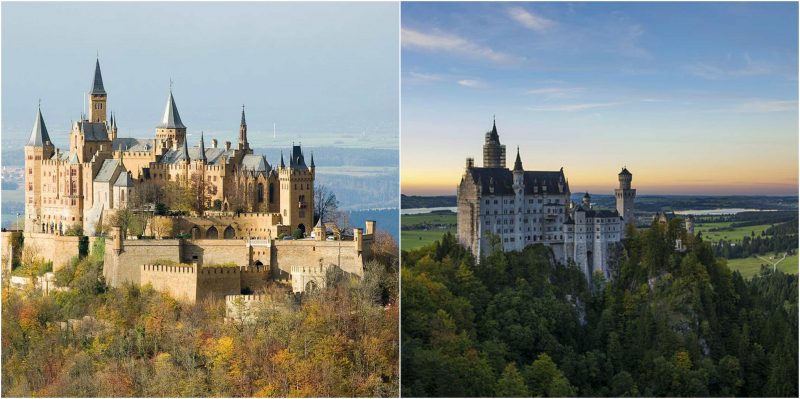Enchanting and grandiose castles on nestled on rugged hills are not from a land far far away. We found the most enchanting and beautiful castles in the world, that have been an inspiration for many poems, films, and stories take a look.
1.Predjamski Castle
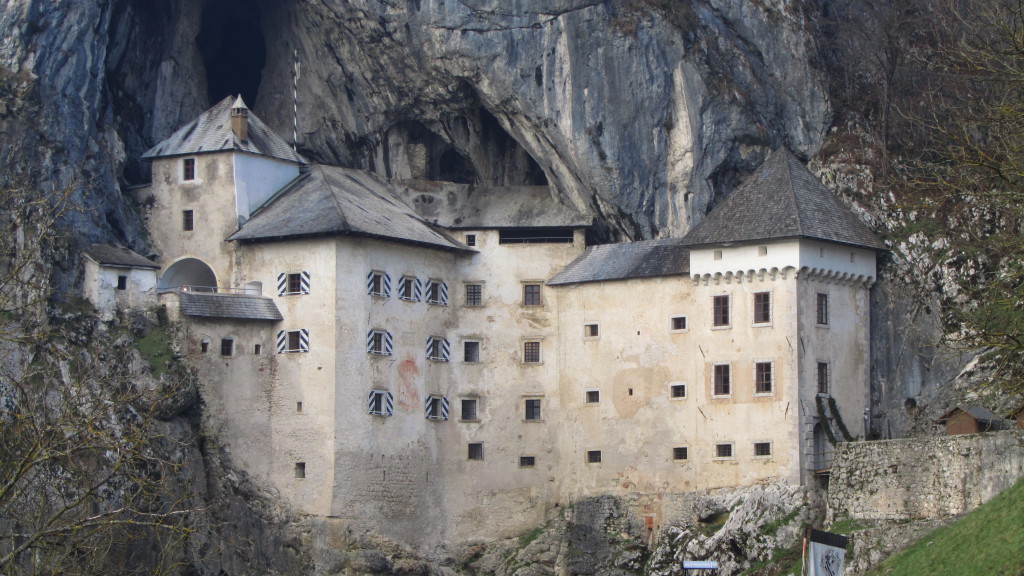
This is a Renaissance castle built within a cave mouth in south-central Slovenia, in the historical region of Inner Carniola. It is located in the village of Predjama, approximately 11 kilometres from the town of Postojna and 9 kilometres from Postojna Cave
The castle was first mentioned in the year 1274 with the German name Luegg, when the Patriarch of Aquileia built the castle in Gothicstyle. The castle was built under a natural rocky arch high in the stone wall to make access to it difficult. It was later acquired and expanded by the Luegg noble family, also known as the Knights of Adelsberg (the German name of Postojna).
The castle became known as the seat of the knight Erazem Lueger (or Luegger), lord of the castle in the 15th century and a renowned robber baron. He was the son of the Imperial Governor of Trieste, Nikolaj Lueger.
According to legend, Erazem came into conflict with the Habsburgs when he killed the commander of the Imperial army, Marshall Pappencheim, who had offended the honour of Erazem’s deceased friend, Andrej Baumkircher of Vipava. Fleeing the vengeance of theHoly Roman Emperor, Frederick III, Erazem reached in the family fortress of Predjama. From there, he allied himself with King Matthias Corvinus of Hungary and began to attack Habsburg estates and towns in Carniola. The emperor commissioned the governor of Trieste, Andrej Ravbar, with the capture or killing of Erazem.
2.Hohenzollern Castle
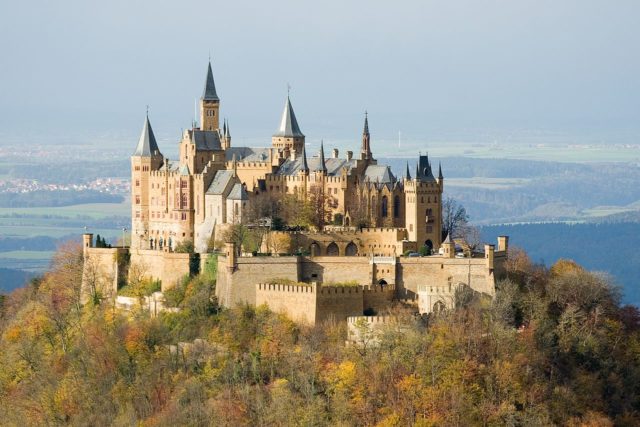
is the ancestral seat of the imperial House of Hohenzollern. The third of three castles on the site, it is located atop Berg Hohenzollern, a 234 m (768 ft) bluff rising above the towns of Hechingen and Bisingen in the foothills of the Swabian Alps of central Baden-Württemberg, Germany.
A popular tourist destination, Hohenzollern castle has over 300,000 visitors per year, making it one of the most visited castles in Germany.
The first fortress on the mountain was constructed in the early 11th century. Over the years the House of Hohenzollern split several times, but the castle remained in the Swabian branch, the dynastic seniors of the Franconian-Brandenburgian cadet branch that later acquired its own imperial throne. This castle was completely destroyed in 1423 after a ten-month siege by the free imperial cities of Swabia. A larger and sturdier structure was constructed from 1454 to 1461, which served as a refuge for the Catholic Swabian Hohenzollerns, including during the Thirty Years’ War. By the end of the 18th century it was thought to have lost its strategic importance and gradually fell into disrepair, leading to the demolition of several dilapidated buildings. Today, only the medieval chapel remains.
3.Neuschwanstein Castle
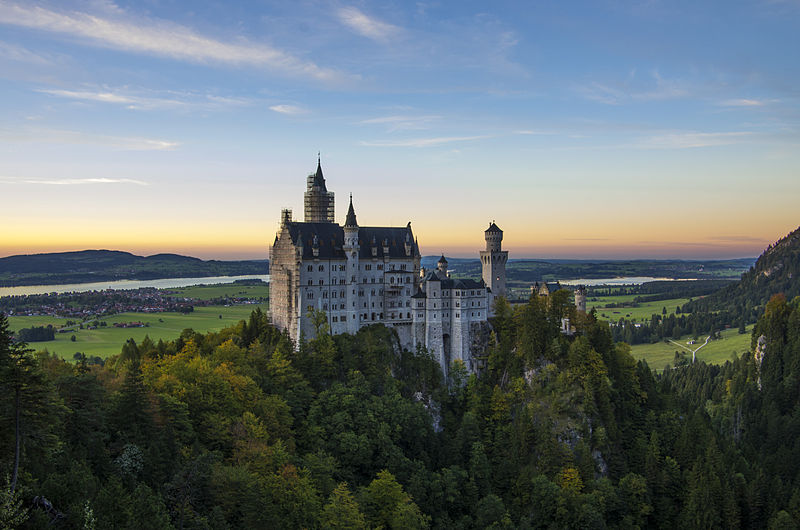
This is a nineteenth-century Romanesque Revival palace on a rugged hill above the village of Hohenschwangau near Füssen in southwestBavaria, Germany. The palace was commissioned by Ludwig II of Bavaria as a retreat and as an homage to Richard Wagner. Ludwig paid for the palace out of his personal fortune and by means of extensive borrowing, rather than Bavarian public funds.
The palace was intended as a personal refuge for the reclusive king, but it was opened to the paying public immediately after his death in 1886. Since then more than 61 million people have visited Neuschwanstein Castle. More than 1.3 million people visit annually, with as many as 6,000 per day in the summer.The palace has appeared prominently in several movies and was the inspiration for Disneyland’s Sleeping Beauty Castle and later, similar structures.
4. Hawthornden Castle
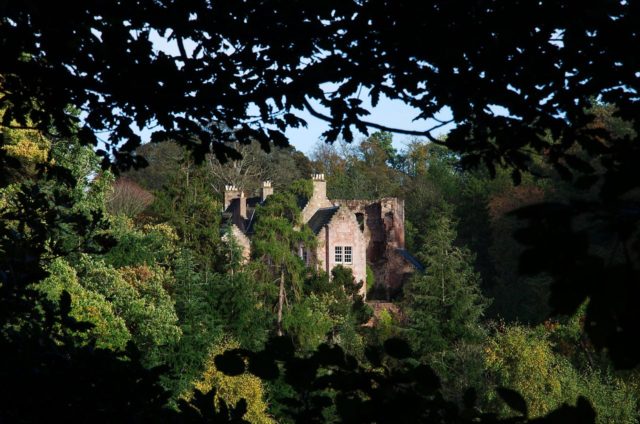
Hawthornden Castle is located on the River North Esk in Midlothian, Scotland. The castle lies a mile to the east of Roslin at grid reference NT287637, and is just downstream from Roslin Castle. Hawthornden comprises a 15th-century ruin, with a 17th-century L-plan house attached. The house has been restored and now serves as a writer’s retreat. Man-made caves in the rock beneath the castle have been in use for much longer than the castle itself.
Hawthornden was a property of the Abernethy family from the 13th century, and passed to the Douglases in the 14th century. The earliest parts of the castle date from the 15th century, and include a large three-storey tower, and the south curtain wall of a triangular courtyard. The castle was sacked twice by the Earl of Hertford in 1544 and 1547 during The Rough Wooing.
In the 16th century, the castle was sold to Sir John Drummond, one of King James VI’s ushers. His son, the poet Sir William Drummond of Hawthornden, was born here, and later extended the castle. The L-shaped north range is his work, dated 1638, and probably replaced earlier buildings on this side of the courtyard. He was visited here in 1618 by English poet Ben Jonson, and the following century Dr Johnson also visited Hawthornden.
This house has been much altered, including a major modernisation of the mid-19th century. The arms of the Abernethy family were installed above a door in 1795, by Dr William Abernethy Drummond, Bishop of Edinburgh. The bishop also added a memorial in honour of his ancestors Sir William Drummond and Sir Lawrence Abernethy of Hawthornden.
5.The Alcázar of Segovia
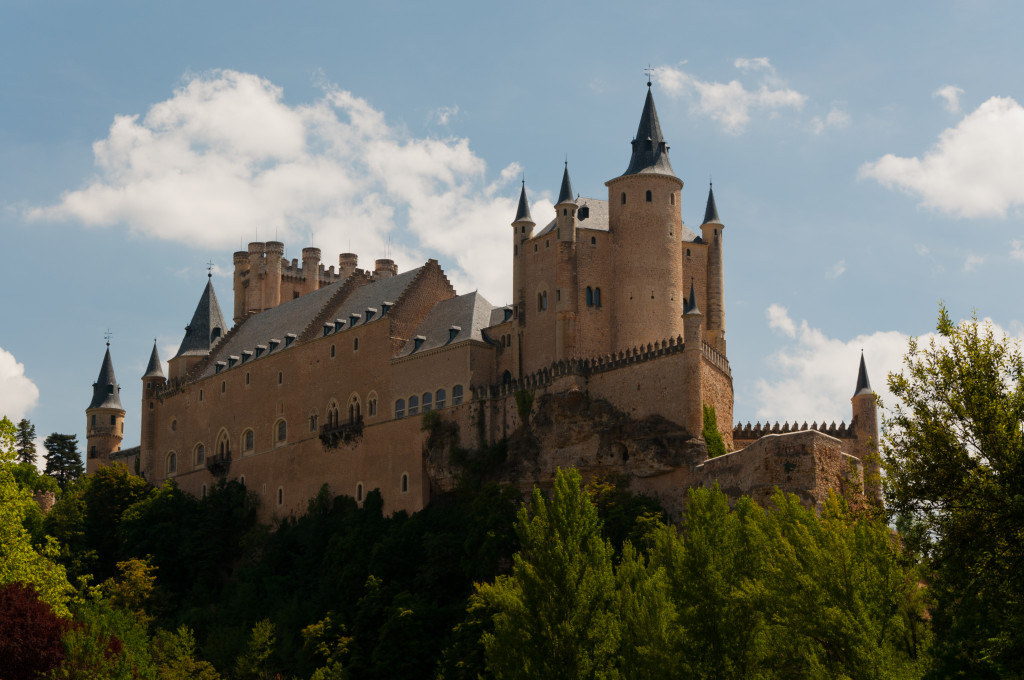
Segovia Castle is a castle, located in the old city of Segovia, Spain. Rising out on a rocky crag above the confluence of two rivers near the Guadarrama mountains, it is one of the most distinctive castle-palaces in Spain by virtue of its shape – like the bow of a ship. The Alcázar was originally built as a fortress but has served as a royal palace, a state prison, a Royal Artillery College and a military academy since then. It is currently used as a museum and a military archives building.
The Alcázar of Segovia, like many fortifications in Spain, started off as an Arab fort, which itself was built on a Roman fort but little of that structure remains. The first reference to this particular Alcázar was in 1120, around 32 years after the city of Segovia returned to Christian hands (during the time when King Alfonso VIreconquered lands to the south of the Duero river down to Toledo and beyond). However, archaeological evidence suggests that the site of this Alcázar was once used in Roman times as a fortification.
The shape and form of the Alcázar was not known until the reign of King Alfonso VIII (1155–1214), however early documentation mentioned a wooden stockade fence. It can be concluded that prior to Alfonso VIII’s reign, it was no more than the wooden fort built over the old Roman foundations. Alfonso VIII and his wife, Eleanor of England, made this Alcázar their principal residence and much work was carried out to erect the beginnings of the stone fortification we see today.
